GWA Newsletter: June
Judy Chicago on the Podcast; Aus and NZ finds; Artists' Gardens, and all the art you need to see, read, and listen to this month!
Dear Readers, I’ve just returned from Australia and NZ where I had the most eye-opening time seeing art history anew. I visited the Auckland Art Gallery, Art Gallery NSW, NGA (Canberra), NGV (Melbourne), and more, and learnt about so many extraordinary women artists. I’ve highlighted 10 at the bottom of this page – scroll on!
The Great Women Artists Podcast
Season 11 is under way. We’ve got new episodes featuring visionary artist Judy Chicago, curator Naomi Beckwith, and classicist Natalie Haynes.
Naomi Beckwith, the Deputy Director of the Guggenheim Museum, New York, spoke on one of the most compelling artists working today: Senga Nengudi, a former dancer turned sculptor, who works with the body and performance:
“It takes a very brave artists like Senga to say that I'm actually going to use the ‘act of disappearance’ as my medium. She has said that “permanence has never been a priority for me” – and I love that phrase, because it shows a sense that something incredibly powerful can happen in the world, and it doesn’t have to be held in an object…”
Judy Chicago
I also interviewed one of the most pioneering and revelatory artists alive: Judy Chicago – don’t miss her exhibition, Revelations, at the Serpentine. In our conversation, she told me about her desire to challenge the concept of a male god:
“Starting with The Dinner Party, when I inverted the triangle and used a table, which of course alludes to The Last Supper, right? Which is all male, with a male figurehead, Jesus…
I think there's a reason that my work has been so kept out of major museums. I think it has to do with the fact that my work challenges not only the art historical paradigm, but the social and cultural and political paradigm that rules the planet…”
Natalie Haynes on Medusa
In the most recent episode, the entertaining and insightful Natalie Haynes hones in on mythical figures and creatures. She gets us to see anew paintings and sculptures of Medusa. Here is Haynes on heroes and monsters:
“In tragic terms, the hero is not just the protagonist, it is the character who is an extremist, essentially. If we look at the idea of hero in its modern sense and its ancient sense, and we try swapping them, what happens? What happens is the man that we grew up thinking of as the hero becomes a monster because the, monster and I grew of her becomes the hero…”
On the need to question stories:
“I think I was too uncritical growing up, but I suppose that's the joy of being a child, isn't it? It doesn't occur to you that there's a different way that stories could be. I think children really require authorial certainty. So it doesn't matter if the story is in a book, but it really matters that the story feels right to children. That's why if you try to read the book for the 20,000,000th time to a three year old, and you try and miss a page out – they know you've got that wrong. That idea that there's a right version of a story is fundamental to the way I think we start encountering stories. The problem with that, though, is that there is no right version of any myth…”
In The Guardian
What can gardens offer artists? Reading Olivia Laing’s The Garden Against Time: In Search of a Common Paradise, focused my attention on this question and drew me to Barbara Hepworth’s artistic refuge in St Ives:
“I love to visit Hepworth’s garden in different seasons, to see plants decaying and regrowing, with sprouting stalks that embrace her sculptures, but also to notice how the work itself physically changes: how the light hits the surface in the greyness of winter versus how it falls in the blistering heat of summer…
Laing ends her book reminding us that gardens are a “common paradise”. They are there to be shared, to gather in, to converse in, to share ideas and to have a dialogue with those past and present. They are sites to feel inspired by, places of possibility, and, ultimately, to see the beauty of the world anew.”
My most recent article recalls the thrilling experience of viewing Tate Britain’s exhibition Now You See Us: Women Artists in Britain 1520-1920. In it, I dwell on the themes and impact of this historic show:
“What struck me while walking around Now You See Us was how little I knew. How did history get away with depriving us of these artists? It’s not like they weren’t recorded. Was it a conscious decision to leave women out, or was it that they just didn’t look?…
This is a global moment – one that proves women have always been creative, they just weren’t seen. Now they are, they are no longer nameless and friendless. Yes, we finally see them, on a national stage, and future generations can grow up knowing the truth.”
OK! Here are your top cultural picks. Katy. Xoxo
7 Things to Listen To
Isabel Okoro on A Shared Gaze
Women in Philosophy on LRB Podcast
The History of Bad Ideas: The Death of the Author on Past Present Future with David Runciman
Hay Festival: ancient wisdom and ecology on Start the Week
Caitlin Moran on Therapy Works with Julia Samuels
Lucinda Chambers on The Chronologist
Zadie Smith on This Cultural Life
10 Shows to See in the UK
Judy Chicago at the Serpentine North (until 1 Sept)
Now You See Us: Women Artists in Britain 1950-1920 at Tate Britain (until 13 Oct)
Alberta Whittle: Under the skin of the ocean, the thing urges us up wild at Mount Stuart, Scotland (unit 25 Aug)
Guy Brett: Angel with a Gun at Alison Jacques (until 15 June)
Franki Raffles: Photography, Activism, Campaign Works at BALTIC (until 16 March 2025)
Beatriz Milhazes at Tate St Ives (until 29 Sept)
Nan Goldin: Sister Saints at Sibylis at Gagosian Open (until 23 June)
Claudia Martínez Garay: WAKCHAKUNA / We Who Share Everything and Nothing at Nottingham Contemporary (until 8 Sept)
Phyllida Barlow: Unscripted at Hauser & Wirth Somerset (until 5 Jan 2025)
Flora Yukhnovich and François Boucher: The Language of the Rococo at the Wallace Collection (from 5 June)
12 Great Things to Read
Emily La Barge: ‘Francesca Woodman and Julia Margaret Cameron’ in 4 Columns
Vivian Gornick: ‘Orgasm isn’t my bag’ in the LRB
10 Artists You Should Know
Minnie Pwerle (1910–2006)
Clarice Beckett (1887–1935)
Emily Kam Kngwarray (1910–1996)
Grace Crowley (1890–1979)
Susan Te Kahurangi King (b.1951)
Sarah Smuts-Kennedy (b.1966)
Olive Cotton (1911–2003)
Joy Hester (1920–1960)
Tracey Moffatt (b.1963)
Nell’s Treehouse, Sydney
That’s it from me! Happy GWA’ing. Thank you for reading this Substack. If you think someone else might enjoy this too, please spread the word and share this post!





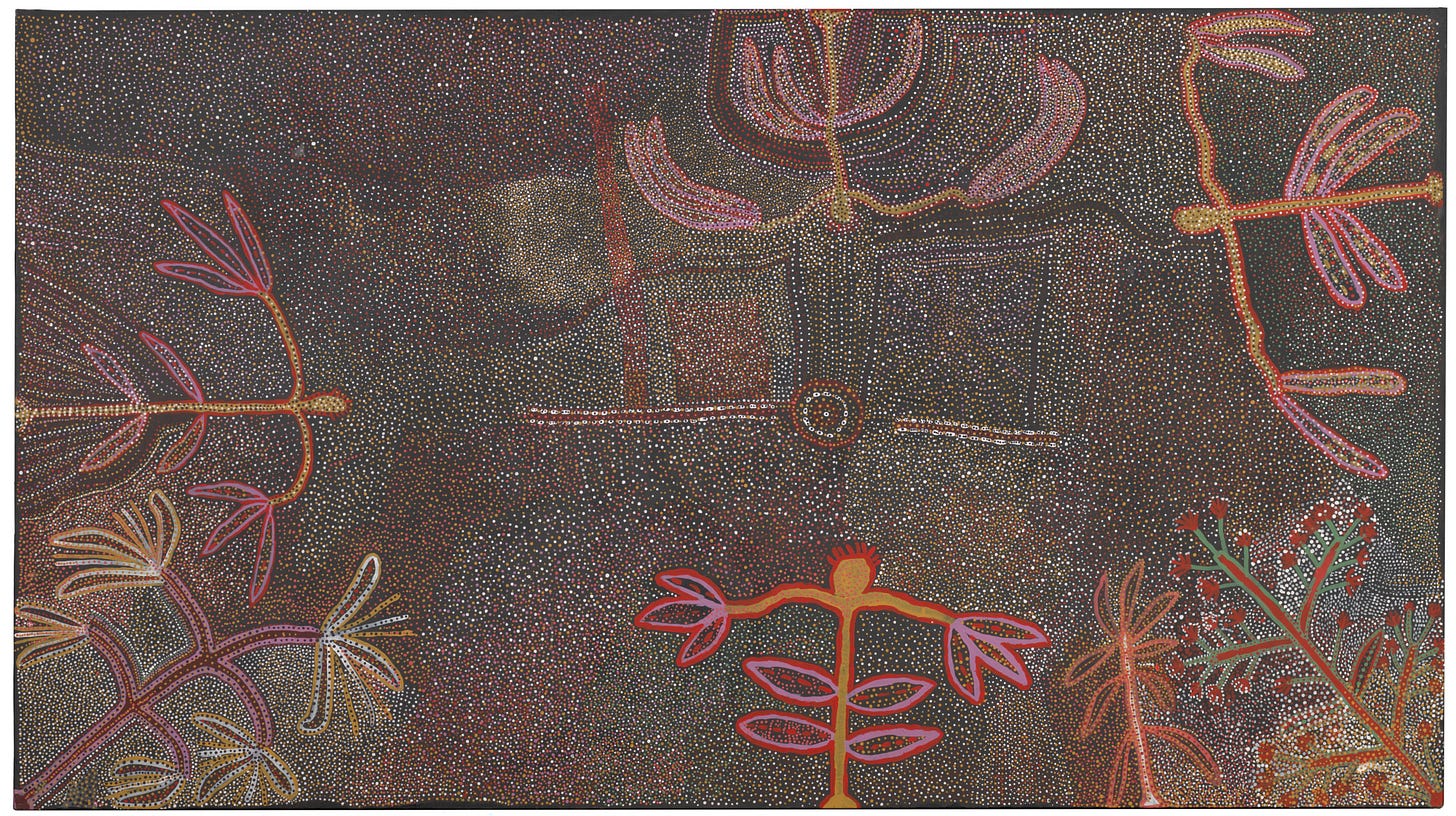
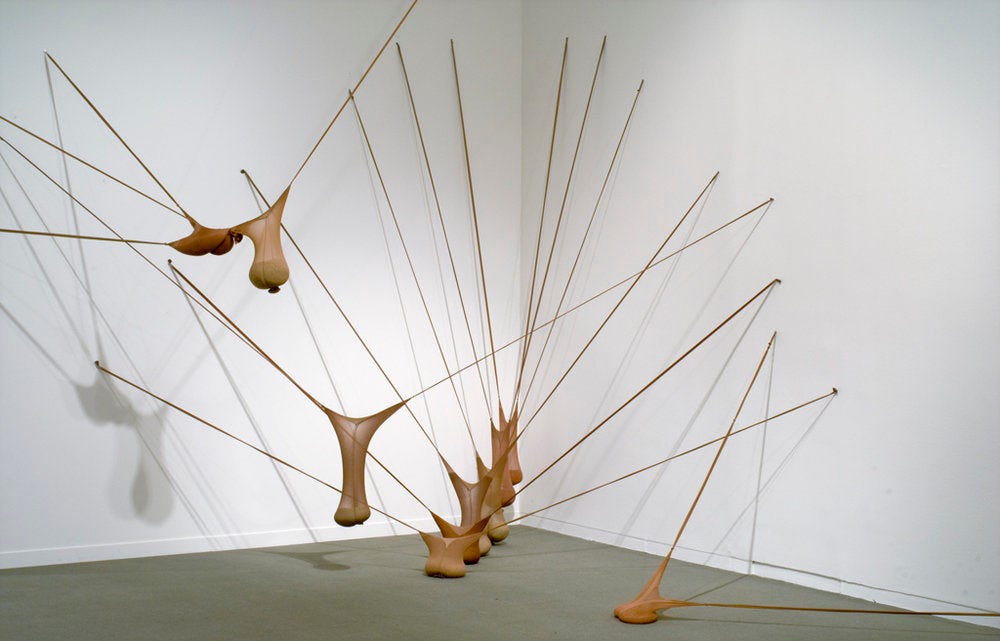
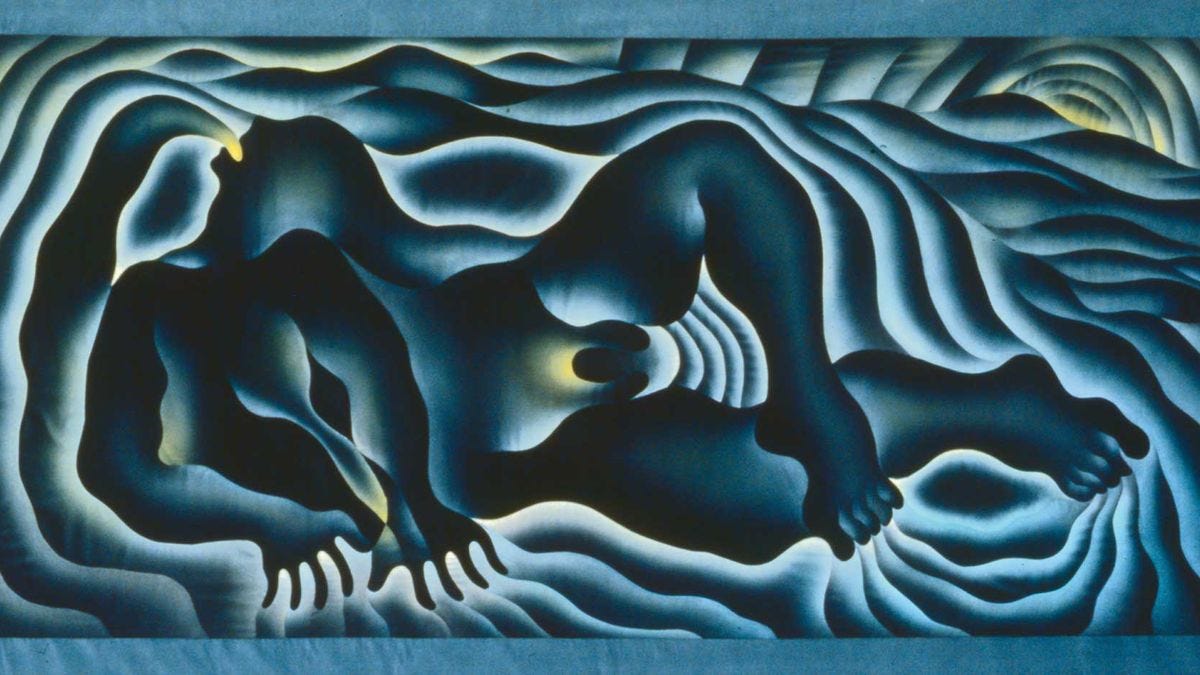
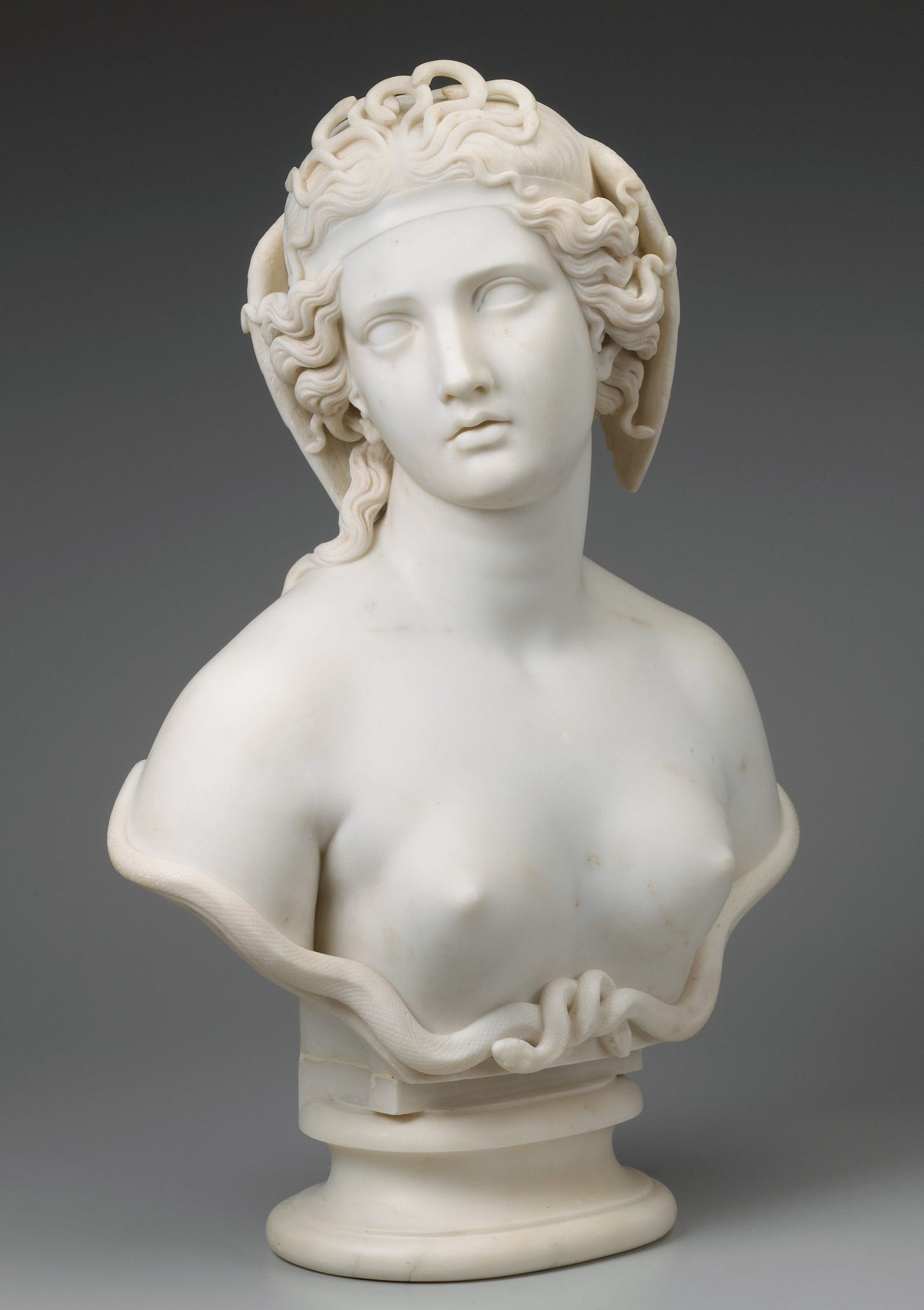





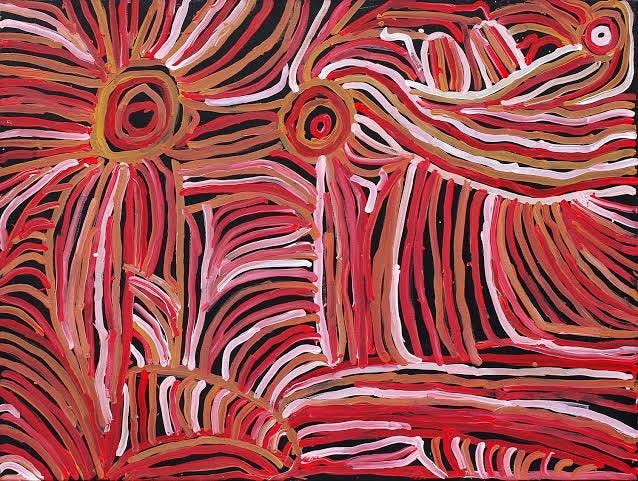
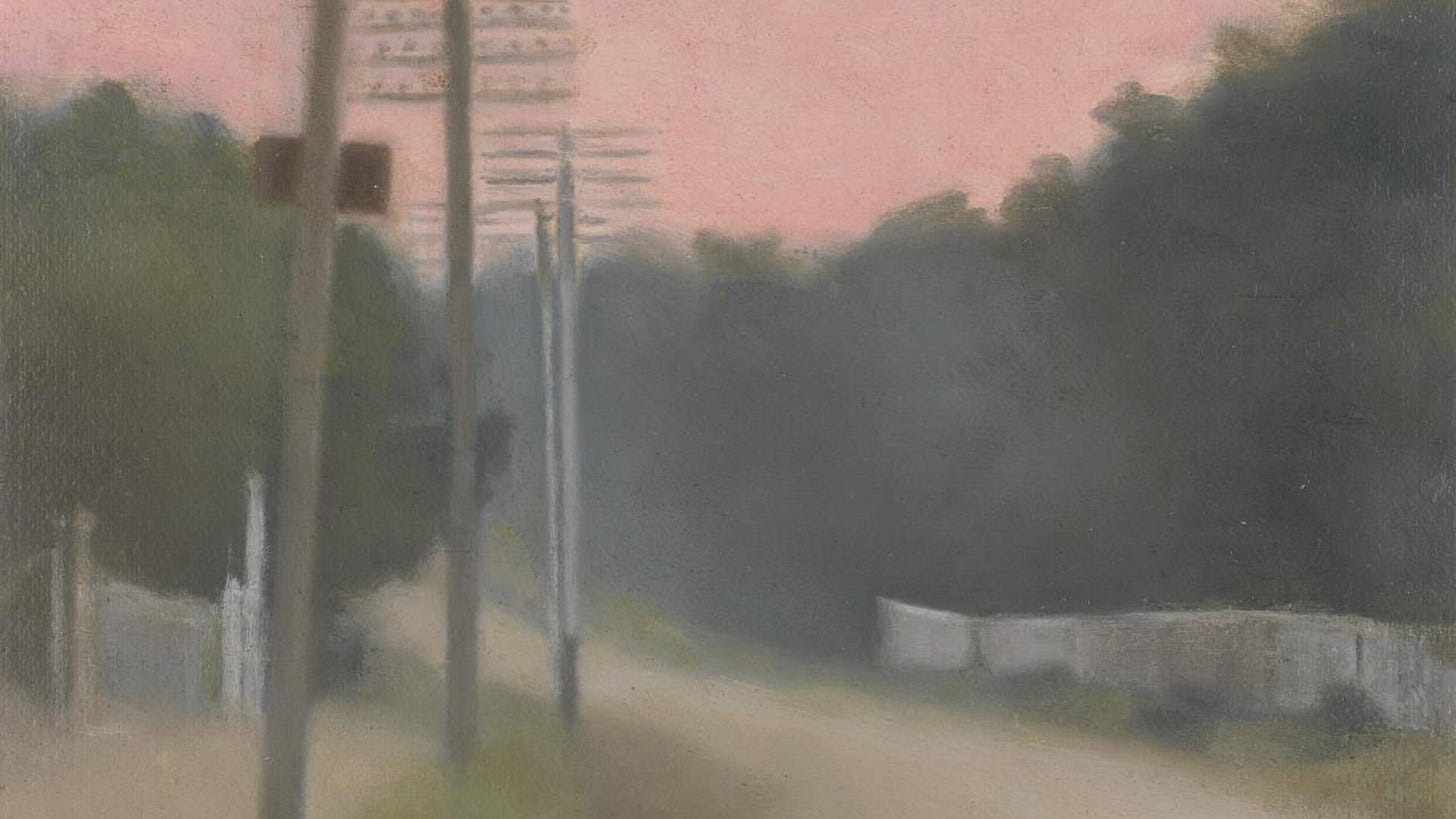

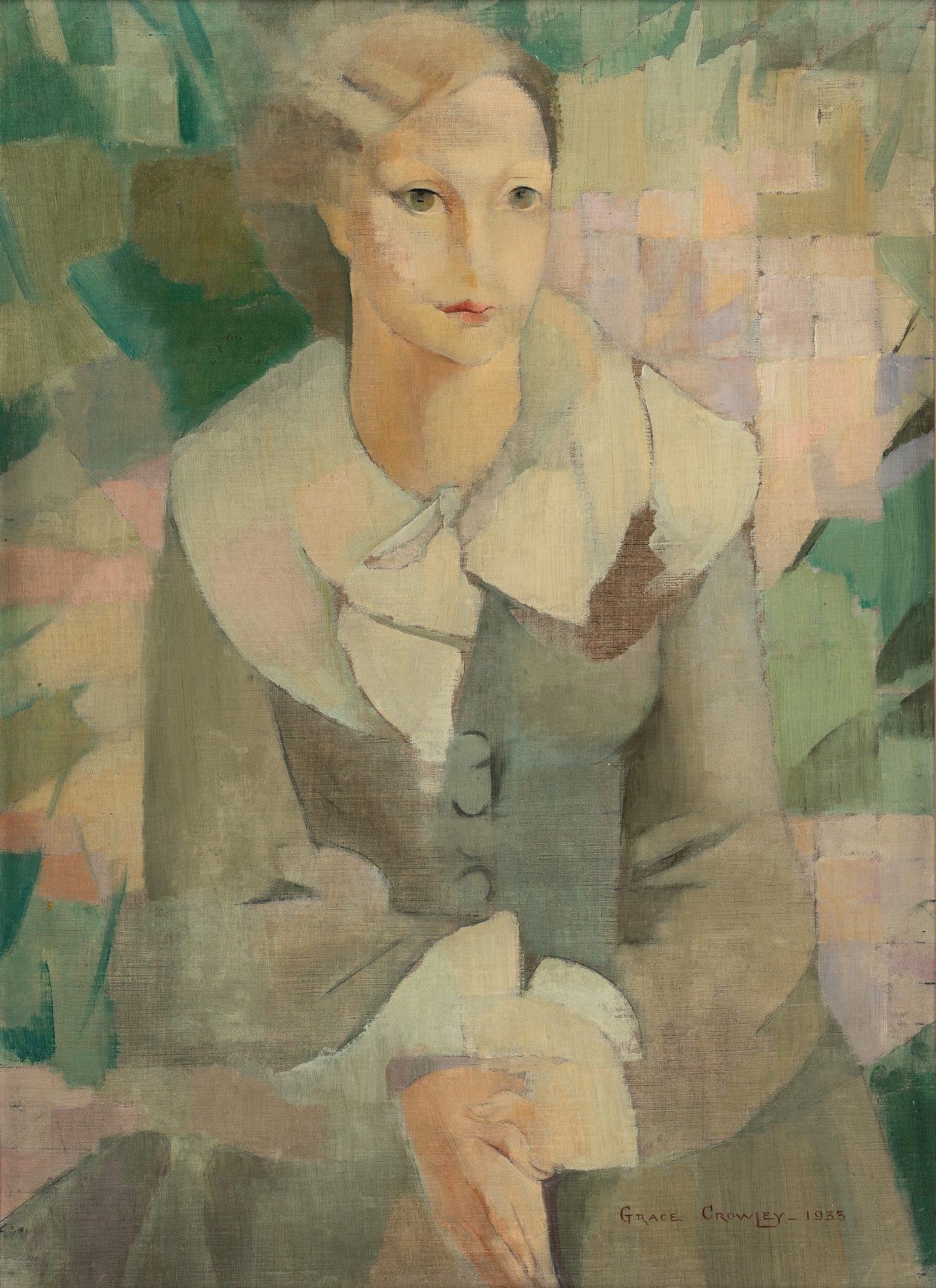
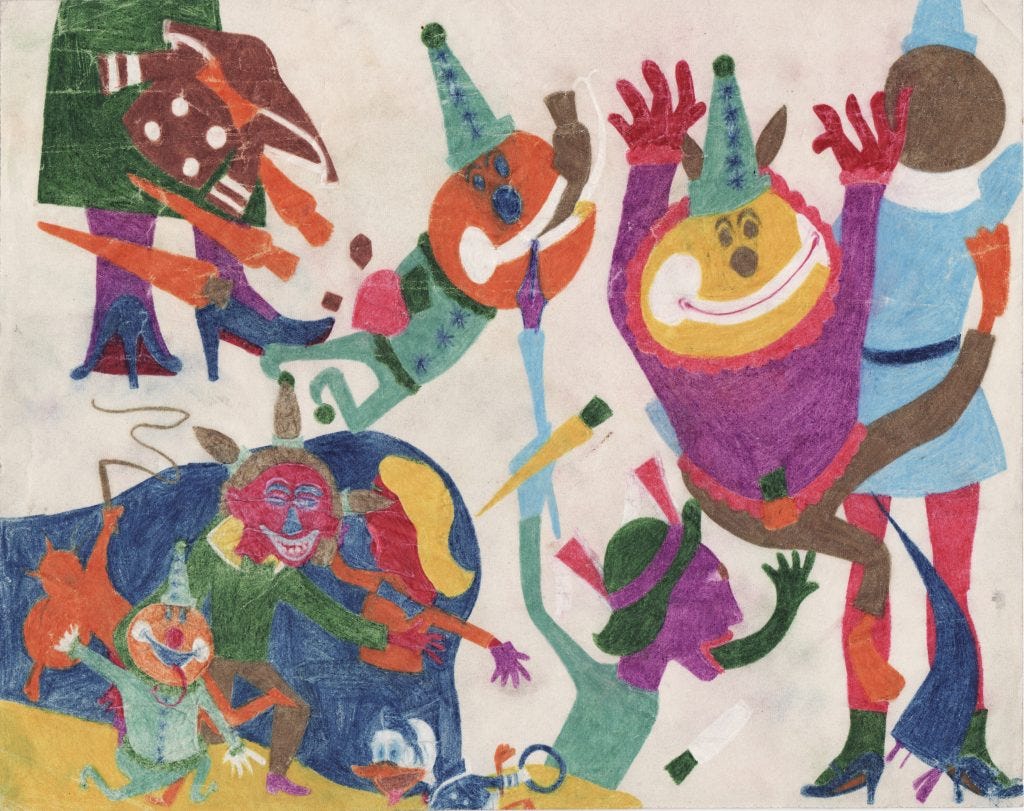

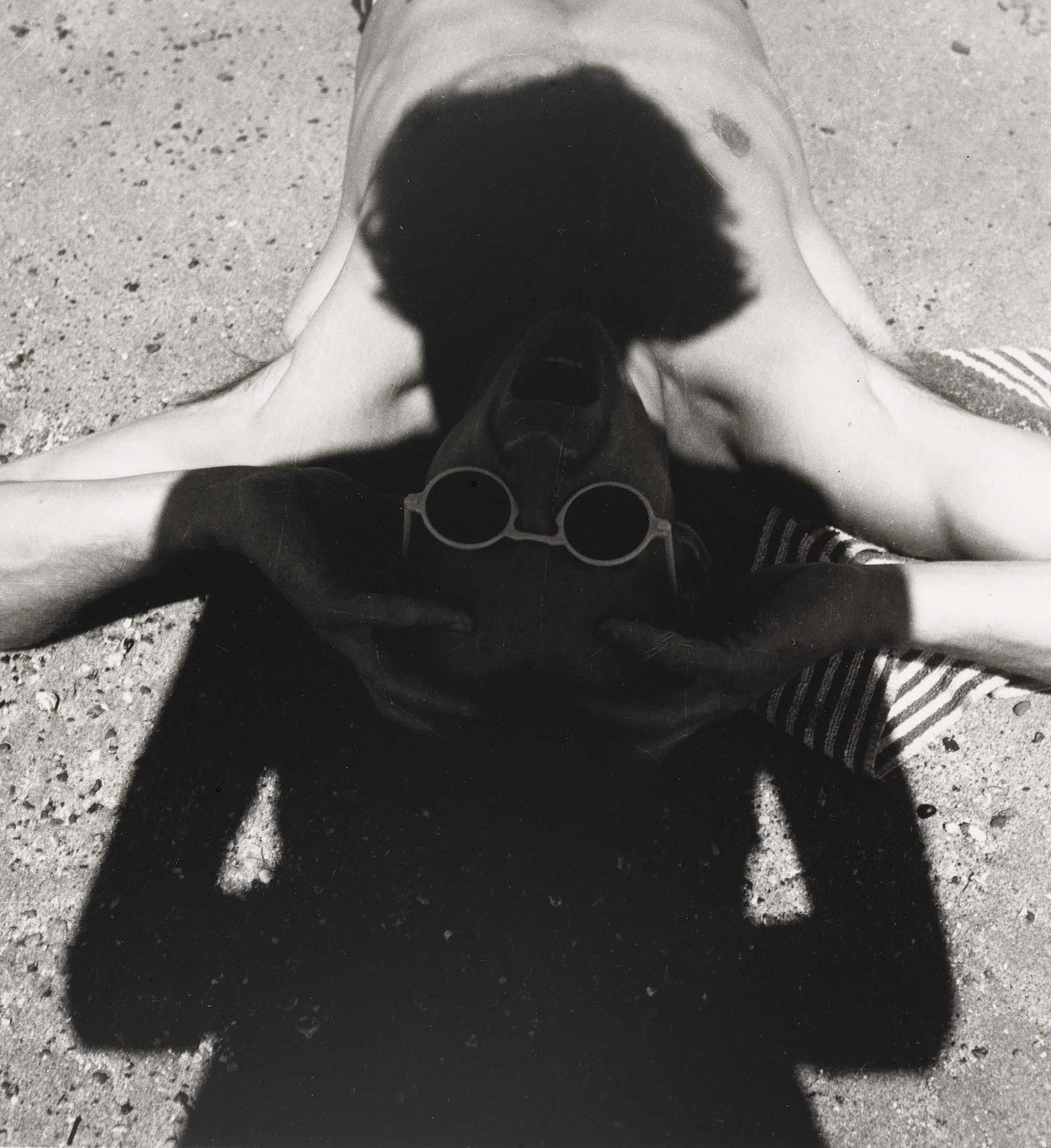
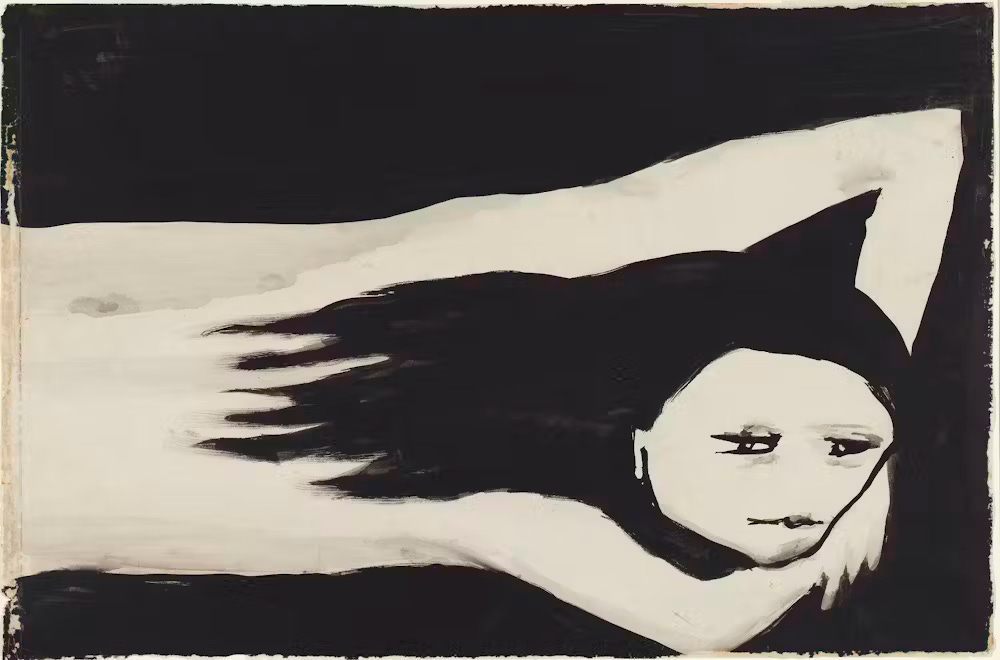
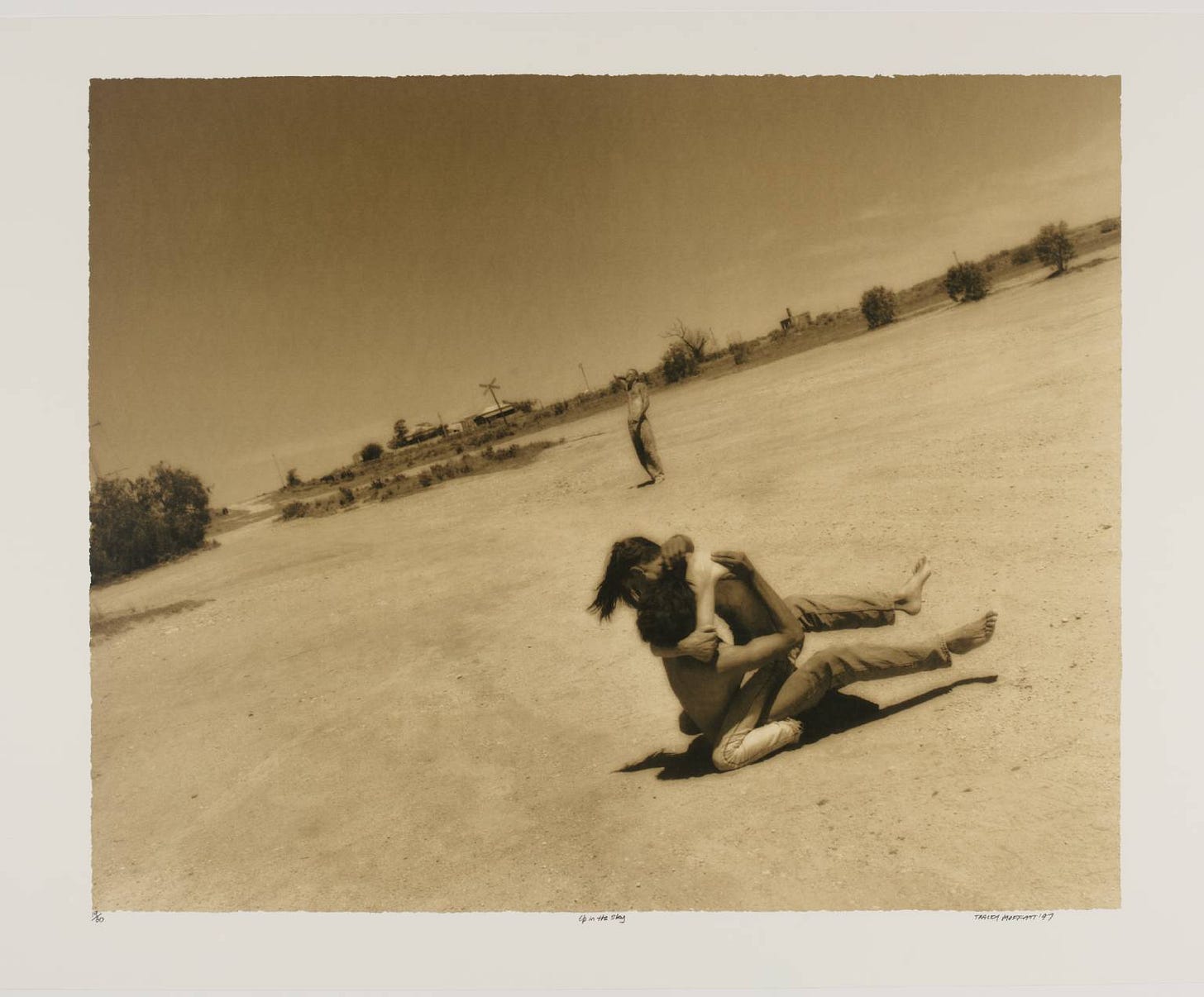
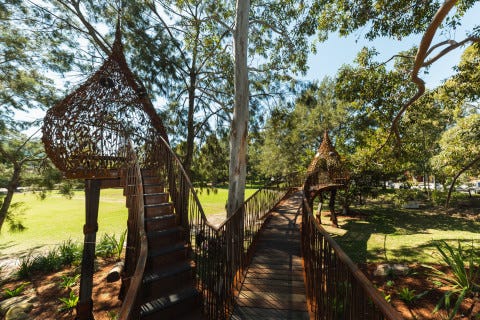
Wonderful to be introduced to Senga Nengudis sculpture! Such a New look at movement and embodied fragility and staying power.
Beautiful selection.
I was lucky enough to see a Beatriz Milhazes exhibition last year and highly recommend her work! But love the look of that piece by Susan Te Kahurangi King and the top painting "Sacred Grasses" too.